Unraveling The Mystery Of Hidden Shell Grotto Beneath Margate
The Shell Grotto is a mysterious underground passageway beneath Margate, Kent.
This unique site is decorated with millions of seashells arranged in intricate patterns, covering around 2,000 square feet (190 square meters) of walls and ceilings.
Discovered in 1835, its origins and purpose remain a mystery.

Exploring the Shell Grotto
The Shell Grotto is a winding underground passage that stretches about 70 feet (21 meters) in length.
It leads visitors through narrow, serpentine tunnels, eventually arriving at a rectangular chamber known as the Altar Chamber.
The entire grotto is underground, with steps leading down from the entrance into a world covered in seashells.
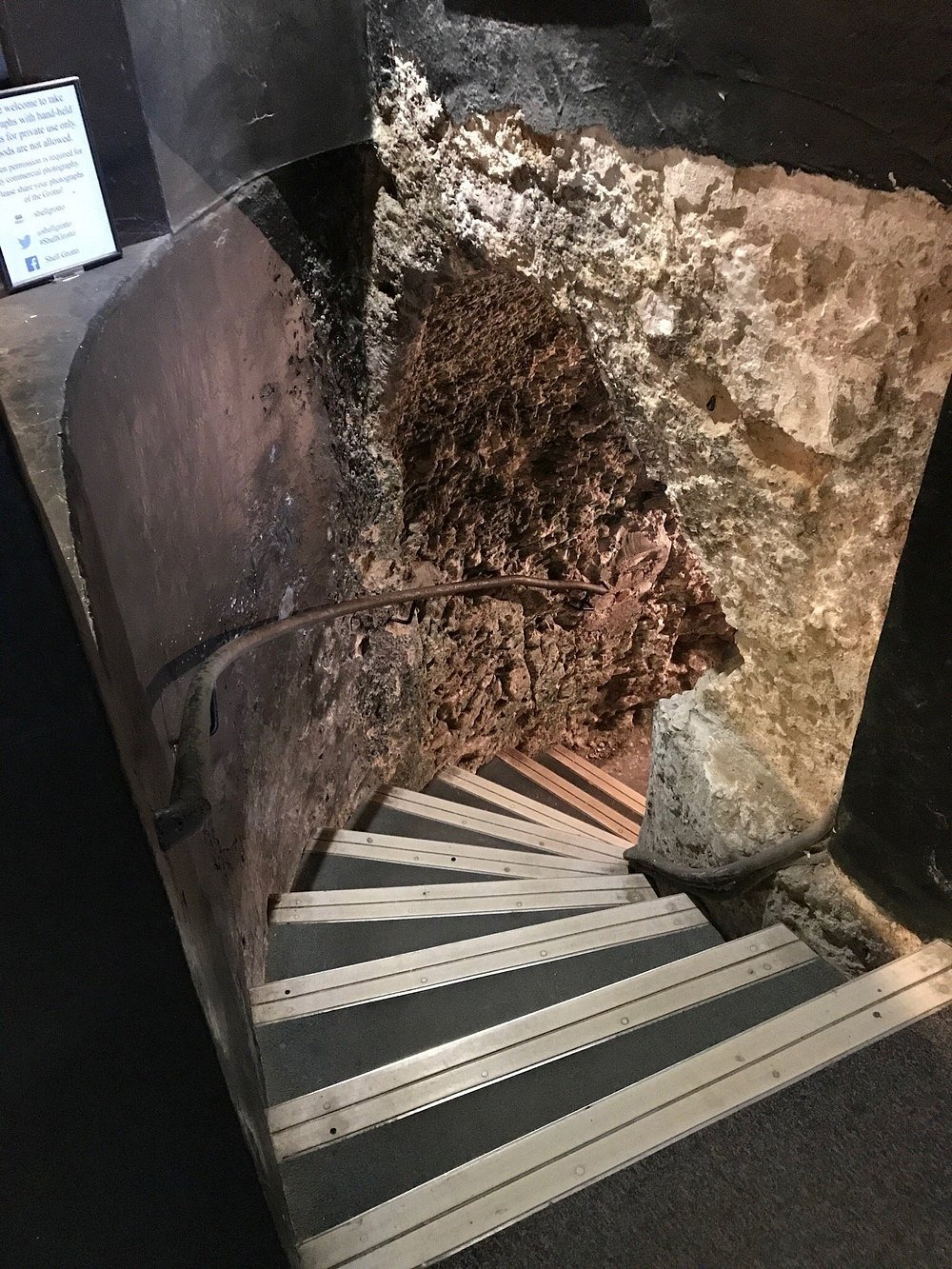
As you descend into the grotto, the walls change from plain chalk to intricate shell mosaics.
Here, the walls and ceiling come alive with mosaics composed of local shells—mussels, cockles, whelks, limpets, scallops, and oysters—painstakingly arranged to form images and patterns.
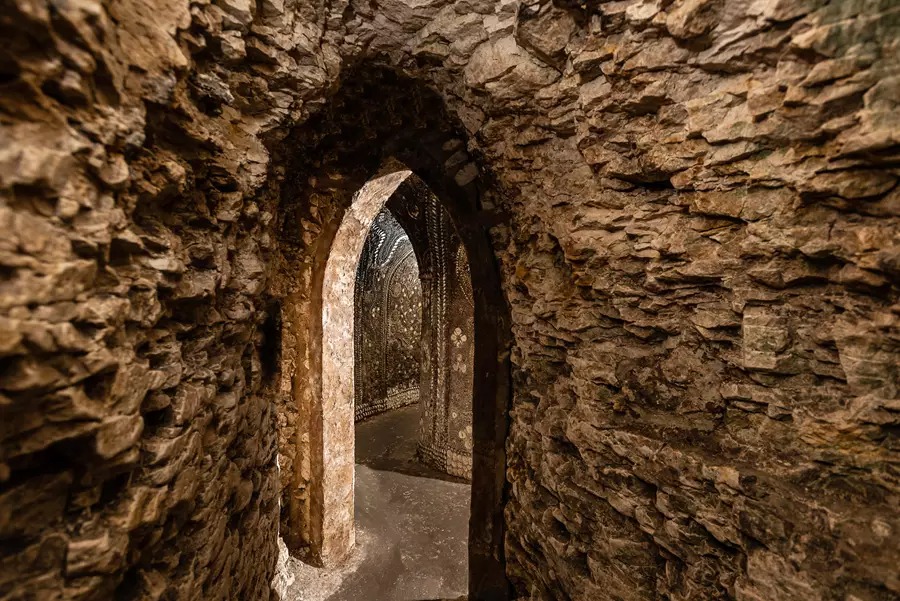
The first major feature you encounter is the Rotunda, a central circular column that connects with a dome above.
This dome allows a small amount of daylight to filter into the grotto, adding a touch of natural light to the otherwise dim space.
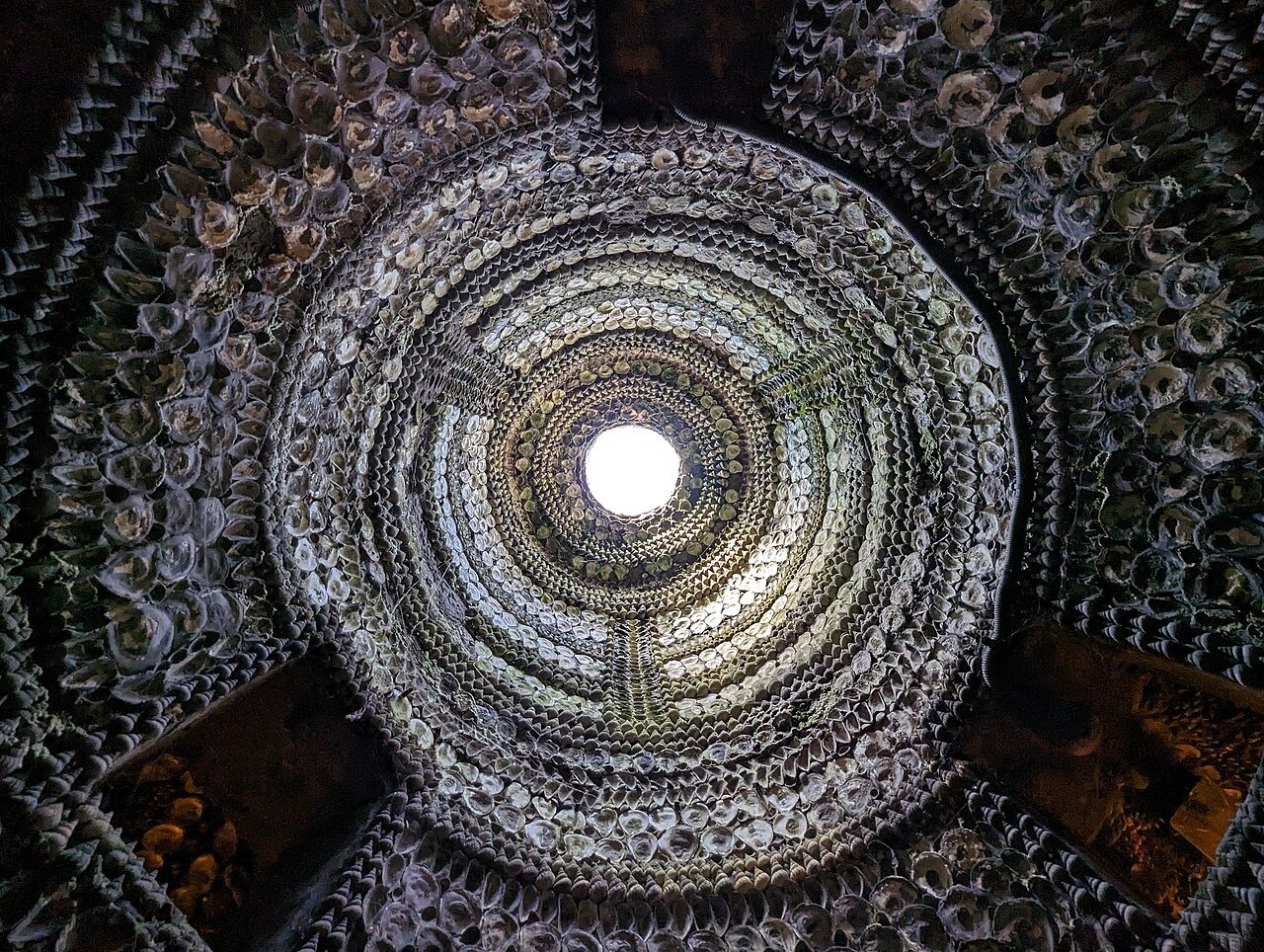
From the Rotunda, you follow the Serpentine Passage, a corridor filled with beautiful shell designs.
These patterns become more detailed as you progress, culminating in the Rectangular Chamber, where the shell designs take on a more formal, geometric character.
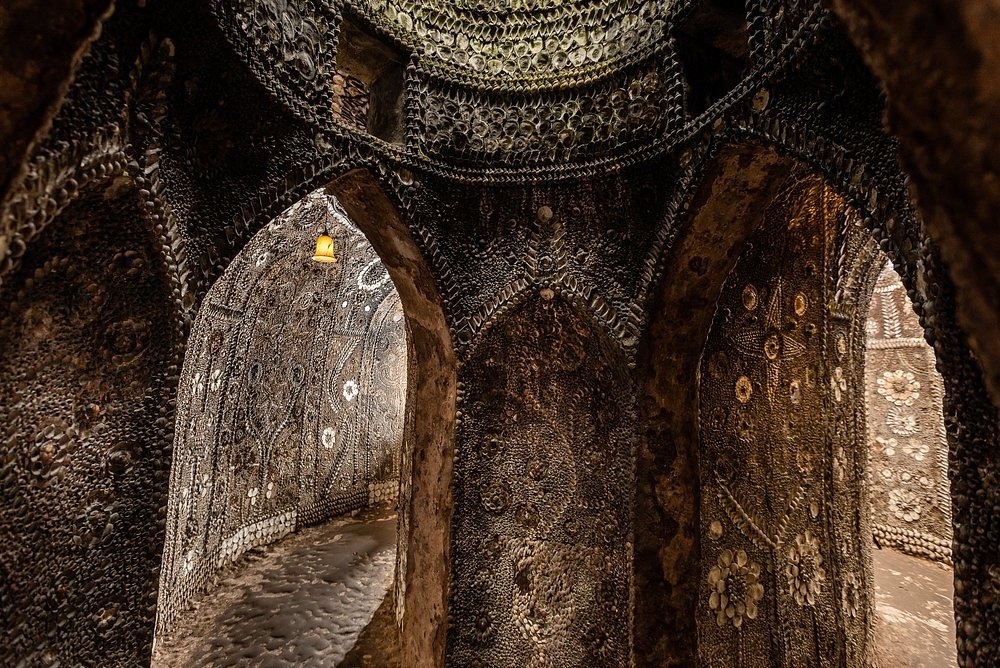
The focal point of this chamber is the “altar,” a niche facing the gothic-style entrance arch.
The chamber’s designs, dominated by star and sun motifs, add to the grotto’s enigmatic atmosphere.
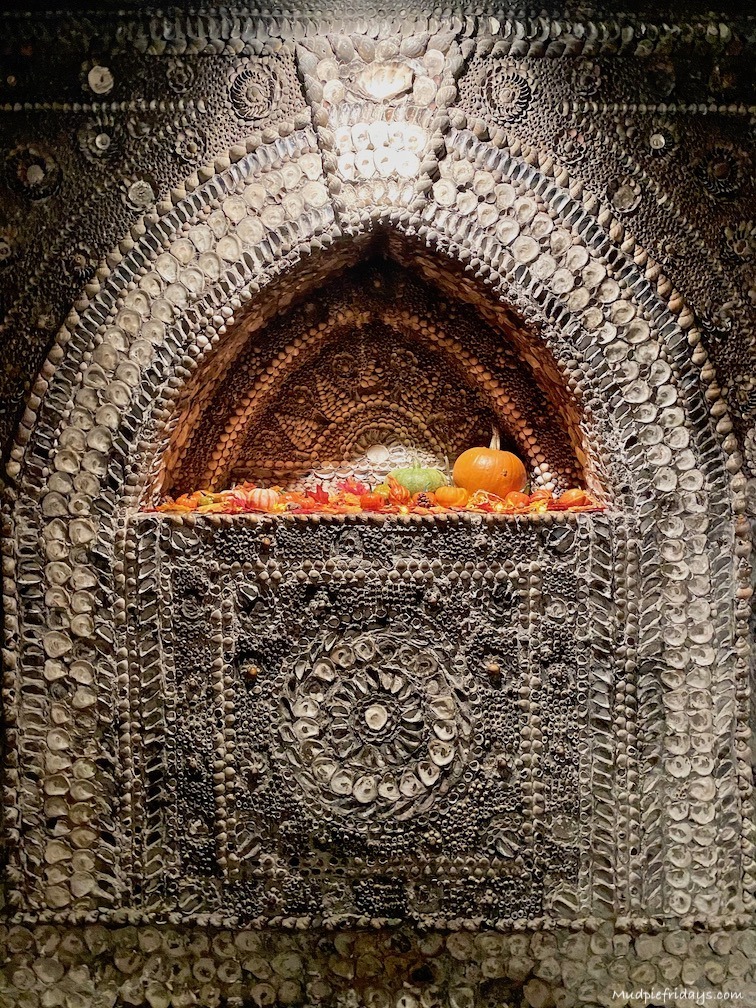
Theories About the Grotto’s Origins
The true purpose of the Shell Grotto remains unknown, and theories about its origins are as varied as they are fascinating.
Some suggest that it was constructed as a rich man’s folly during the 18th or 19th century.
Others believe it could be much older, possibly serving as a prehistoric astronomical calendar or a meeting place for practitioners of sea witchcraft.
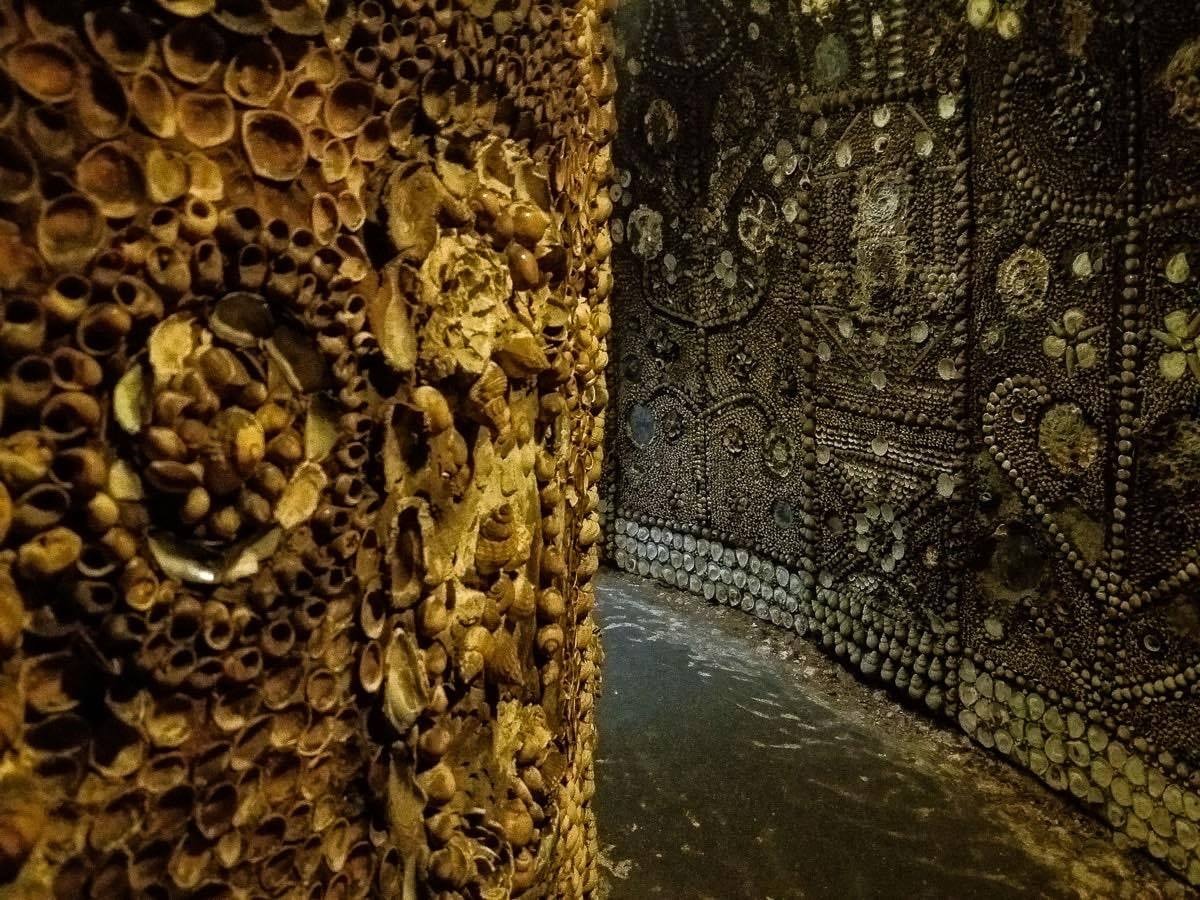
One of the more intriguing theories links the grotto to the Phoenicians, who were known for establishing colonies around the Mediterranean during the first millennium BCE.
The discovery in 2007 of a domed cave beneath Rome’s Palatine Hill, decorated with shells and mosaics similar to those in Margate, has lent some credence to this theory.
However, the gothic style of the arches within the grotto suggests a much later construction date, likely post-12th century.
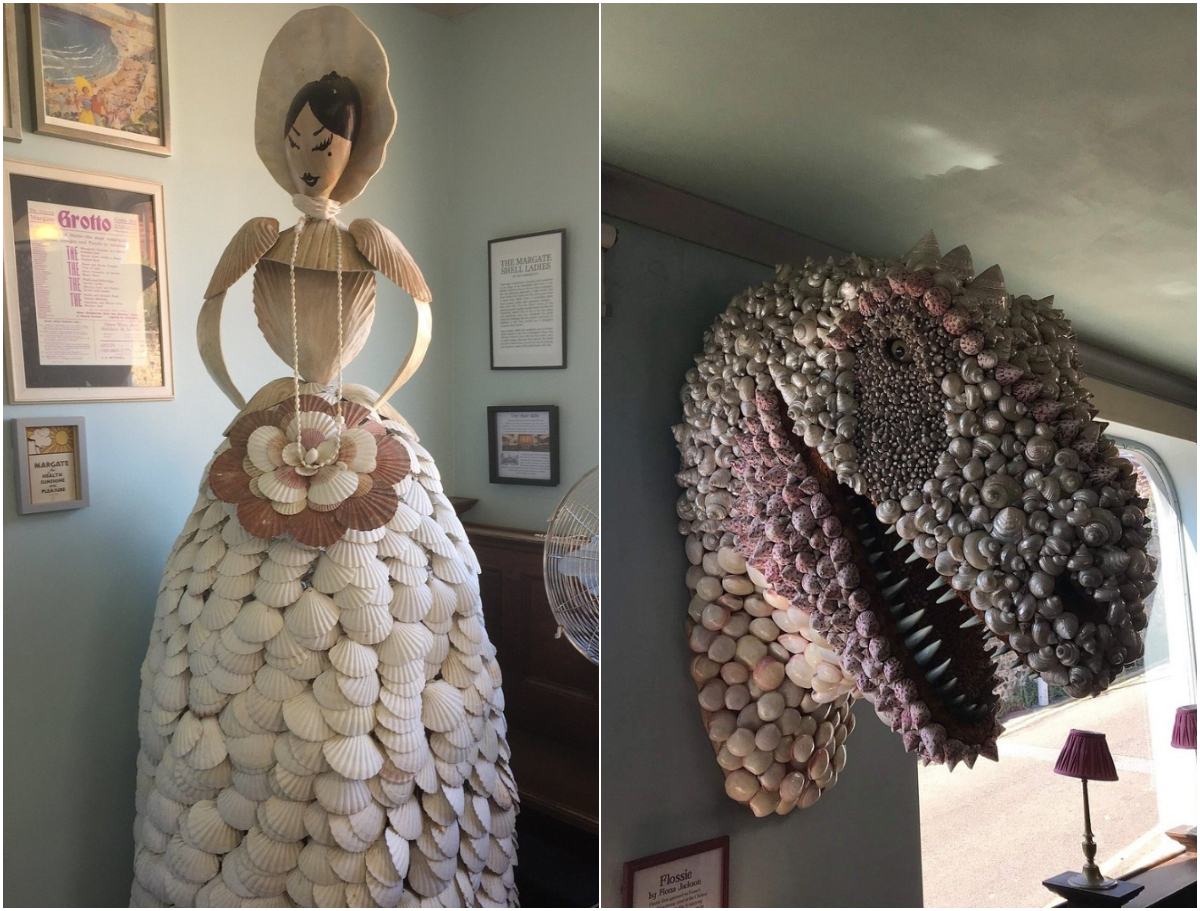
Discovery and Preservation of the Grotto
The Shell Grotto was discovered by accident in 1835.
Workers excavating near a cottage stumbled upon the underground passage, and it was soon opened to the public.
Since then, it has been privately owned and managed.
In the 1930s, the grotto was updated with electric lighting, replacing the old gas lamps.
Unfortunately, the shells had lost much of their original color due to the gas soot, turning mostly white.

Efforts to restore and preserve the grotto have been ongoing, and in 2012, after a five-year conservation project, it was removed from the Heritage at Risk Register.
A program called The Roundel Project allows people to sponsor the restoration of specific mosaic panels.
The Friends of the Shell Grotto, a trust formed in 2008, works to preserve and promote this unique site.

Visiting the Shell Grotto
The Shell Grotto is now a Grade I-listed building and a popular place to visit.
However, it’s important to note that the grotto is not accessible to wheelchair users due to its steep, narrow passageways and uneven terrain.
The grotto is located on a steep road with limited parking, and the nearest accessible parking is about 480 to 600 meters away.

